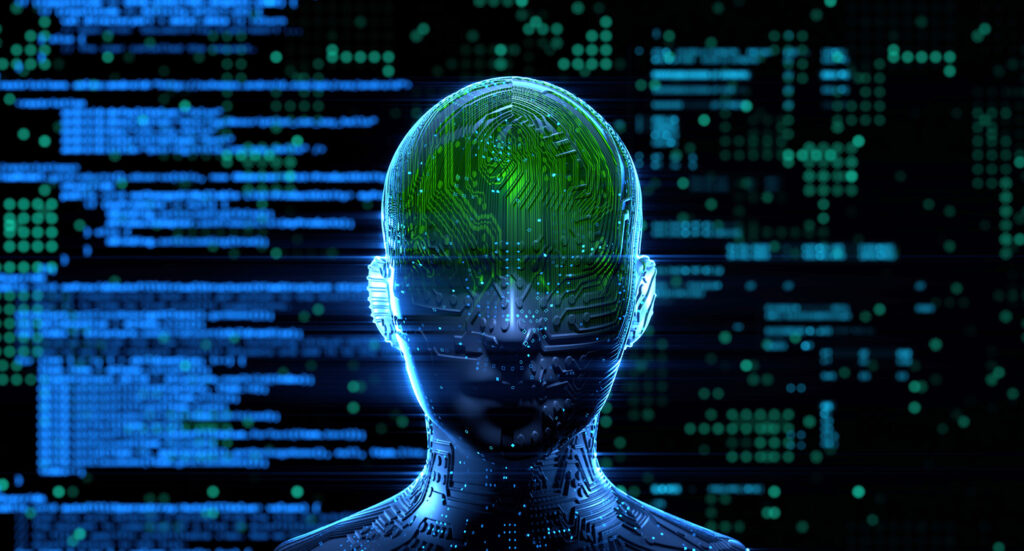Table of Contents
Cloud computing, while generally secure, is not entirely safe from potential threats posed by Artificial Intelligence (AI). AI can be leveraged by both defenders and attackers in cloud environments, making it essential to understand how AI intersects with cloud security. While AI-powered security solutions help protect cloud systems, malicious actors are increasingly using AI to identify vulnerabilities and execute more sophisticated attacks.
Here’s a detailed look at how AI impacts cloud computing security and the precautions necessary to safeguard cloud environments.
AI-Driven Cloud Security: The Benefits
AI is being utilized by cloud providers and security professionals to enhance cloud security in several ways:
1. AI-Powered Threat Detection
AI and machine learning (ML) algorithms can analyze massive volumes of cloud data to detect unusual activity, security anomalies, and potential threats that traditional methods might miss. These systems can identify patterns that indicate attacks, even if they’re highly sophisticated.
Example:
AI can detect anomalies in user behavior, such as an employee accessing cloud resources from an unusual location or at odd hours, and flag the behavior as suspicious. These algorithms can then trigger alerts or automated responses, such as blocking access or requesting additional authentication.
Recommendation:
Cloud administrators should integrate AI-based security tools like AWS GuardDuty, Azure Sentinel, or Google Chronicle to monitor and protect their cloud infrastructure. These tools continuously learn and adapt to evolving threats.
2. AI for Automating Incident Response
AI can automate the response to certain security incidents. For example, if AI detects an intrusion or data breach, it can automatically block access, quarantine affected areas, or notify administrators in real time. This rapid response helps reduce the time it takes to contain and remediate security issues.
Example:
If a phishing attack successfully compromises a user account, AI could detect the unusual activity, disable the account, and alert the security team, all without human intervention.
Threats from AI in Cloud Computing
While AI offers significant advantages for enhancing cloud security, it also poses new risks when used maliciously by attackers. Here are some of the key threats posed by AI:
1. AI-Driven Attacks on Cloud Infrastructure
Cybercriminals are using AI to launch more efficient and effective attacks on cloud environments. AI can be used to automate tasks such as identifying vulnerabilities, performing brute-force attacks, or bypassing security defenses. AI-driven attacks can evolve quickly, making them harder to detect.
Example:
AI-powered malware can adapt to different cloud environments, hiding its activity by mimicking legitimate behavior. This makes detection harder, allowing attackers to exploit cloud systems more stealthily.
Recommendation:
Cloud administrators should use AI-driven detection systems that adapt in real time to evolving threats. Tools like Darktrace use AI to learn a cloud environment’s normal behavior and detect when malicious activity deviates from the norm.
2. AI-Enabled Social Engineering and Phishing
AI can be used to enhance social engineering attacks by automating phishing attempts or impersonating legitimate users. Attackers can use AI to craft highly targeted phishing emails, mimicking the writing style of colleagues or executives. They can also use AI-generated content, such as deepfake videos or audio, to deceive users into compromising cloud systems.
Example:
AI tools can automate spear-phishing campaigns that target cloud administrators, tricking them into revealing their credentials, which hackers can use to access cloud environments.
Recommendation:
To mitigate AI-driven phishing attacks, organizations should enforce multi-factor authentication (MFA), use email filtering solutions, and regularly train employees to recognize sophisticated phishing attempts.
3. AI and Data Poisoning
AI systems that rely on data inputs can be vulnerable to data poisoning attacks. In these cases, attackers inject false or malicious data into cloud-based AI models to corrupt their outputs. This could lead to incorrect threat assessments or flawed decision-making in cloud security systems.
Example:
A cloud service using AI to detect fraud could be tricked into ignoring certain transactions if attackers successfully feed it poisoned training data. This could allow them to exploit the system without being detected.
Recommendation:
Organizations should secure their AI pipelines, ensuring that data used to train or feed AI models is validated and sanitized. Additionally, monitoring AI systems for irregular behavior can help detect when data poisoning might be occurring.
Are Cloud Providers Safe from AI Threats?
Cloud providers like AWS, Azure, and Google Cloud take significant measures to protect their infrastructure from AI-driven attacks. However, while they implement AI to improve security, no system is completely safe from malicious AI. It’s a shared responsibility between cloud providers and their customers to implement robust security measures.
Cloud Provider Measures:
- AI-Powered Threat Detection Systems: Cloud providers are investing heavily in AI-based security to detect, analyze, and respond to emerging threats.
- Continuous Monitoring: AI systems in cloud environments continuously monitor for unusual patterns or behaviors, flagging potential threats as soon as they arise.
- Security Patches: AI helps cloud providers automatically detect vulnerabilities in their systems and push security patches at scale.
Security Best Practices to Mitigate AI-Driven Threats
To safeguard your cloud environment from AI-driven threats, it’s essential to adopt a multi-layered security approach:
1. Strengthen Identity and Access Management (IAM)
AI-powered attacks, especially those that target credentials and access points, can be mitigated with strong IAM policies. Use role-based access control (RBAC), multi-factor authentication (MFA), and strict password policies to secure your cloud environment.
2. Adopt AI-Driven Security Tools
Leverage AI-based security tools that detect and adapt to new threats. Tools such as Google Cloud’s Security Command Center, Azure Sentinel, and AWS GuardDuty can automatically detect suspicious activity and provide real-time insights.
3. Secure APIs
Since AI-driven attacks often exploit APIs, it’s crucial to secure them with proper authentication and authorization. Use OAuth 2.0, rate limiting, and API security monitoring to prevent attackers from exploiting insecure APIs.
4. Regularly Audit Cloud Configurations
Use Cloud Security Posture Management (CSPM) tools to continuously audit your cloud environment. These tools use AI to detect vulnerabilities, misconfigurations, and compliance issues, helping prevent security gaps.
5. Train Employees on AI-Driven Phishing
AI can automate social engineering and phishing attacks, making them more convincing. Regularly train employees to recognize sophisticated phishing techniques and implement email filtering solutions to block suspicious emails.
Conclusion
While cloud computing offers significant advantages, it is not entirely safe from the threats posed by malicious AI. Attackers are increasingly using AI to automate attacks, identify vulnerabilities, and launch more sophisticated phishing attempts. However, AI is also being leveraged by cloud providers and security teams to defend against these threats. By implementing strong security measures and adopting AI-driven tools, organizations can protect their cloud environments from AI-powered attacks.
For more insights on cloud security and AI threats, follow Cerebrix on social media at @cerebrixorg.
Ethan Kim
Tech Visionary and Industry Storyteller
Read also
November 19, 2024
November 19, 2024
November 19, 2024

